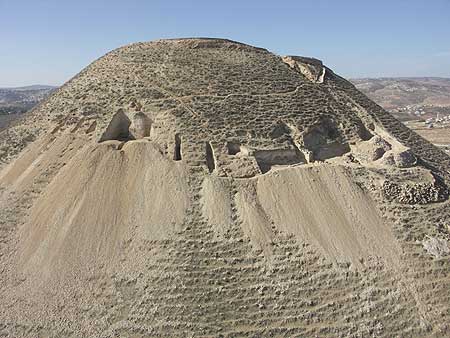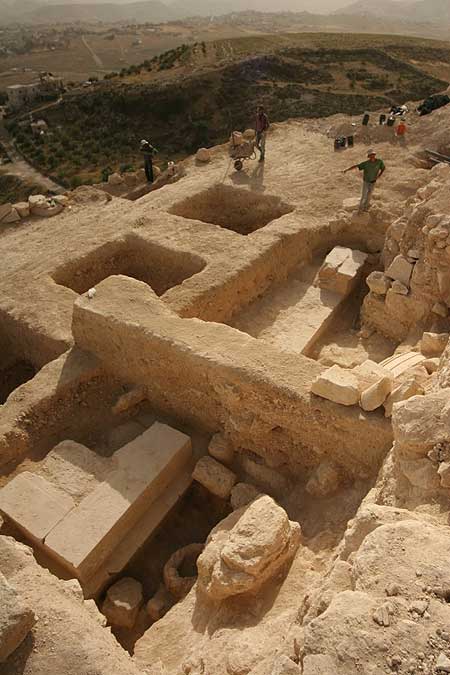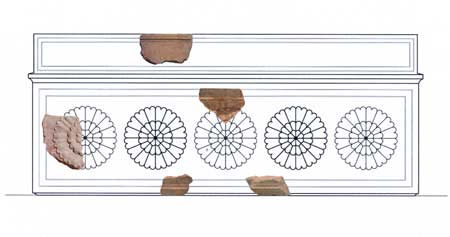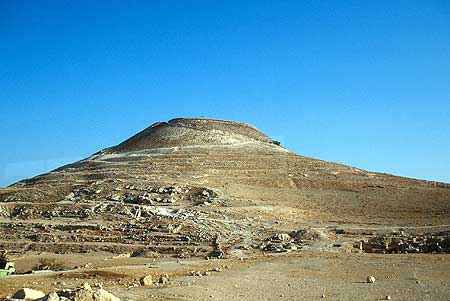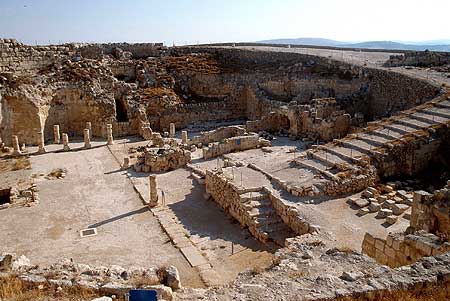The Hebrew University in Jerusalem held a press conference this morning on the discovery of Herod’s tomb. Here is an excerpt from the press release:
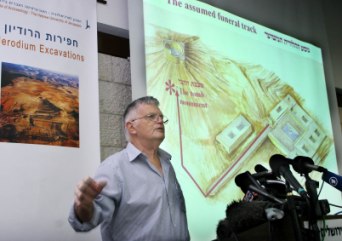
Jerusalem, May 8, 2007 — The long search for Herod the Great’s tomb has ended with the exposure of the remains of his grave, sarcophagus and mausoleum on Mount Herodium’s northeastern slope, Prof. Ehud Netzer of the Hebrew University of Jerusalem Institute of Archaeology announced today.
….
The approach to the burial site – which has been described by the archaeologists involved as one of the most striking finds in Israel in recent years – was via a monumental flight of stairs (6.5 meters wide) leading to the hillside that were especially constructed for the funeral procession.
The excavations on the slope of the mountain, at whose top is the famed structure comprised of a palace, a fortress and a monument, commenced in August 2006. The expedition, on behalf of the Institute of Archaeology of the Hebrew University of Jerusalem, was conducted by Prof. Netzer, together with Yaakov Kalman and Roi Porath and with the participation of local Bedouins.
The location and unique nature of the findings, as well as the historical record, leave no doubt that this was Herod’s burial site, said Prof. Netzer.
The mausoleum itself was almost totally dismantled in ancient times. In its place remained only part of its well built podium, or base, built of large white ashlars (dressed stone) in a manner and size not previously revealed at Herodium.
Among the many high quality architectural elements, mostly well decorated, which were spread among the ruins, is a group of decorated urns (made in the form of special jars that were used to store body ashes). Similar ones are to be found on the top of burial monuments in the Nabatean world. The urns had a triangular cover and were decorated on the sides.
Spread among the ruins are pieces of a large, unique sarcophagus (close to 2.5 meters long), made of a Jerusalemite reddish limestone, which was decorated by rosettes. The sarcophagus had a triangular cover, which was decorated on its sides. This is assumed with certainty to be the sarcophagus of Herod. Only very few similar sarcophagi are known in the country and can be found only in elaborate tombs such as the famous one at the King’s Tomb on Selah a-Din Street in East Jerusalem. Although no inscriptions have been found yet at Herodium, neither on the sarcophagus nor in the building remains, these still might be found during the continuation of the dig.
Worthy of note is the fact that the sarcophagus was broken into hundreds of pieces, no doubt deliberately. This activity, including the destruction of the monument, apparently took place in the years 66-72 C.E. during the first Jewish revolt against the Romans, while Jewish rebels took hold of the site, according to Josephus and the archaeological evidence. The rebels were known for their hatred of Herod and all that he stood for, as a “puppet ruler� for the Romans.
….
The Tomb Estate included two monumental buildings and a large ritual bath (mikveh) as well as the large route (350 meters long and 30 meters wide) which was prepared for the funeral. When no sign of the burial place itself was found within the Tomb Estate, the expedition started to search for it on the slope of the hill, although there seems to be no doubt that the initial intention of the king was to be buried in the estate and that only in a later stage of his life – apparently when he grew old – did he change his mind and asked to be buried within the artificial cone which gave the hill of Herodium its current volcano-shape.

